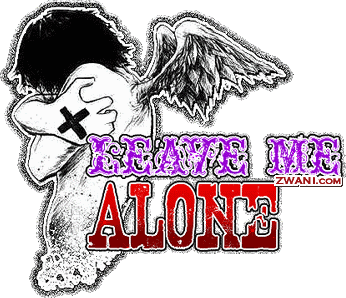Scale Structure of a Scene
The large-scale structure of a scene is extremely simple. Actually, there are two possible choices you can make for your scene structure. Dwight Swain calls these two choices "scenes" and "sequels". This is horrendously confusing, since both of these are what most ordinary people call scenes. In what follows, I'm going to capitalize these terms, calling them Scenes and Sequels. That is your signal that I'm using Swain's language. When I use the word "scene" in the ordinary non-Swain sense, I'll leave it uncapitalized. Since you are exceptionally brilliant and perceptive, you will not find this a problem. Let me give you the high points on Scenes and Sequels right up front.
A Scene has the following three-part pattern:
- Goal
- Conflict
- Disaster
A Sequel has the following three-part pattern:
- Reaction
- Dilemma
- Decision
You may think these patterns are too simple. You may think this is reducing writing to Paint-by-Numbers. Well, no. This is reducing fiction to the two patterns that have been proven by thousands of novelists to actually work. There are plenty of other patterns people use. They typically work less well. It may well be that there are other patterns that work better. If you can find one that works better, please tell me. But for now, let's pretend that Dwight Swain is right. Let's pretend these are absolutely the best possible patterns for writing fiction. Let's pretend these are the keys to writing the perfect scene. Let's move on and look at each of these in turn.
As we said, the Scene has the three parts Goal, Conflict, and Disaster. Each of these is supremely important. I am going to define each of these pieces and then explain why each is critical to the structure of the Scene. I assume that you have selected one character to be your Point Of View character. In what follows, I'll refer to this character as your POV character. Your goal is to convincingly show your POV character experiencing the scene. You must do this so powerfully that your reader experiences the scene as if she were the POV character.
- Goal: A Goal is what your POV character wants at the beginning of the Scene. The Goal must be specific and it must be clearly definable. The reason your POV character must have a Goal is that it makes your character proactive. Your character is not passively waiting for the universe to deal him Great Good. Your character is going after what he wants, just as your reader wishes he could do. It's a simple fact that any character who wants something desperately is an interesting character. Even if he's not nice, he's interesting. And your reader will identify with him. That's what you want as a writer.
- Conflict: Conflict is the series of obstacles your POV character faces on the way to reaching his Goal. You must have Conflict in your Scene! If your POV character reaches his Goal with no Conflict, then the reader is bored. Your reader wants to struggle! No victory has any value if it comes too easy. So make your POV character struggle and your reader will live out that struggle too.
- Disaster: A Disaster is a failure to let your POV character reach his Goal. Don't give him the Goal! Winning is boring! When a Scene ends in victory, your reader feels no reason to turn the page. If things are going well, your reader might as well go to bed. No! Make something awful happen. Hang your POV character off a cliff and your reader will turn the page to see what happens next.
That's all! There is literally nothing more you need to know about Scenes. Now let's look at Sequels . . .
The Sequel has the three parts Reaction, Dilemma, and Decision. Again, each of these is critical to a successful Sequel. Remove any of them and the Sequel fails to work. Let me add one important point here. The purpose of a Sequel is to follow after a Scene. A Scene ends on a Disaster, and you can't immediately follow that up with a new Scene, which begins with a Goal. Why? Because when you've just been slugged with a serious setback, you can't just rush out and try something new. You've got to recover. That's basic psychology.
- Reaction: A Reaction is the emotional follow-through to a Disaster. When something awful happens, you're staggering for awhile, off-balance, out of kilter. You can't help it. So show your POV character reacting viscerally to his Disaster. Show him hurting. Give your reader a chance to hurt with your characters. You may need to show some passage of time. This is not a time for action, it's a time for re-action. A time to weep. But you can't stagger around in pain forever. In real life, if people do that they lose their friends. In fiction, if you do it, you lose your readers. Eventually, your POV character needs to get a grip. To take stock. To look for options. And the problem is that there aren't any . . .
- Dilemma: A Dilemma is a situation with no good options. If your Disaster was a real Disaster, there aren't any good choices. Your POV character must have a real dilemma. This gives your reader a chance to worry, which is good. Your reader must be wondering what can possibly happen next. Let your POV character work through the choices. Let him sort things out. Eventually, let him come to the least-bad option . . .
- Decision: A Decision is the act of making a choice among several options. This is important, because it lets your POV character become proactive again. People who never make decisions are boring people. They wait around for somebody else to decide. And nobody wants to read about somebody like that. So make your character decide, and make it a good decision. Make it one your reader can respect. Make it risky, but make it have a chance of working. Do that, and your reader will have to turn the page, because now your POV character has a new Goal.
And now you've come full circle. You've gone from Scene to Sequel and back to the Goal for a new Scene. This is why the Scene-Sequel pattern is so powerful. A Scene leads naturally to a Sequel, which leads naturally to a new Scene. And so on forever. At some point, you'll end the cycle. You'll give your POV character either Ultimate Victory or Ultimate Defeat and that will be the end of the book. But until you get there, the alternating pattern of Scene and Sequel will carry you through. And your reader will curse you when he discovers that he's spent the whole doggone night reading your book because he could not put the thing down.
That's perfection.
However, it's only half the battle. I've told you how to design the Scenes and Sequels in the large scale. But you still need to write them. You need to write paragraph after compelling paragraph, with each one leading your POV character smoothly through from initial Goal to knuckle-whitening Conflict to bone-jarring Disaster, and then through a visceral Reaction to a horrible Dilemma and finally on to a clever Decision.
 Post
Post 






0 komentar:
Posting Komentar